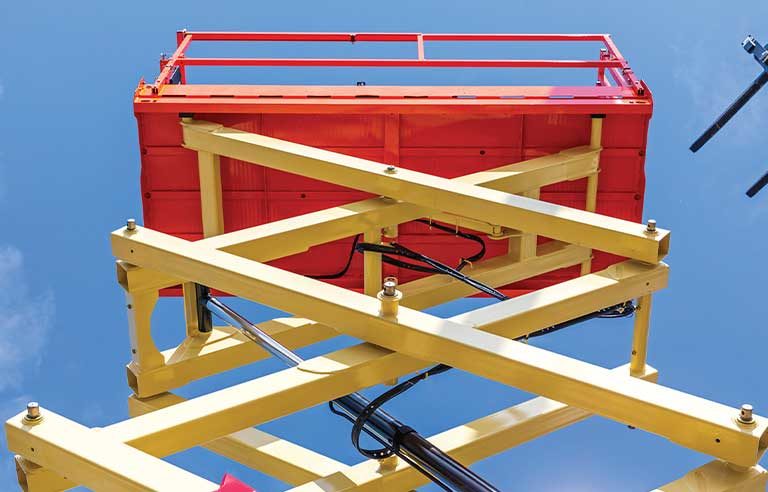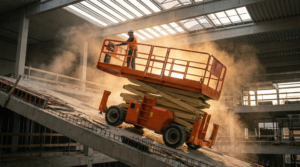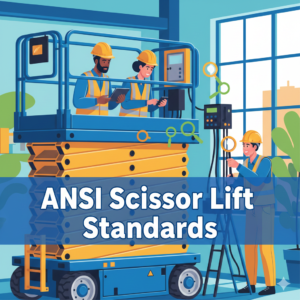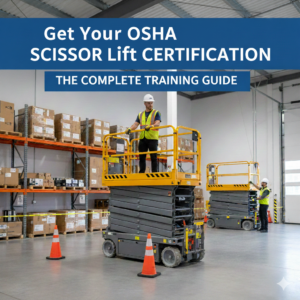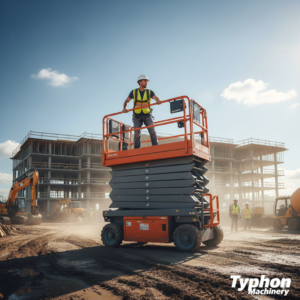Scissor lifts are essential in various industrial settings, providing the necessary lift and support for heavy loads. However, it’s crucial to understand the differences between “Heavy Duty” and “High Cycle” (HICY) scissor lifts to ensure you choose the right equipment for your specific needs.
Heavy Duty Scissor Lifts
Definition and Characteristics
“Heavy Duty” refers to scissor lifts designed to handle higher load capacities, typically starting at 8,000 lbs or more. This classification highlights the lift’s ability to support heavier weights, not necessarily its ability to endure more cycles.
Misconceptions
Many people assume that “Heavy Duty” implies the lift can withstand more frequent use. However, the term primarily indicates a higher load capacity. Heavy Duty scissor lifts may not be suitable for applications requiring continuous cycling.
Applications
Heavy Duty scissor lifts are ideal for environments where lifting substantial weights is necessary, but the frequency of lifting and lowering cycles is moderate. Examples include:
- Construction sites for lifting heavy materials.
- Warehouses for moving large pallets.
- Manufacturing plants for handling heavy equipment.
High Cycle (HICY) Scissor Lifts
Definition and Importance
High Cycle (HICY) scissor lifts are engineered for applications requiring frequent and continuous cycling. These lifts are designed to handle the stress of constant use, ensuring durability and reliability over time.
Identifying High Cycle Applications
Applications that demand continuous lifting and lowering operations benefit from HICY scissor lifts. Examples include:
- Assembly lines where materials need to be lifted and lowered repeatedly.
- Distribution centers with high throughput.
- Automated manufacturing processes.
Common Failure Modes in Scissor Lifts
Understanding common failure modes helps in choosing the right lift and implementing effective maintenance strategies.
Motor Failure
Standard scissor lifts often use intermittent duty motors to minimize the footprint and fit within the lift frame. These motors are sufficient for typical use, where the lift operates in cycles that allow the motor to cool down between operations. However, in high-frequency applications, these motors can overheat and fail prematurely. Upgrading to continuous running motors with higher horsepower can prevent this issue.
Oil Failure
High-frequency use can lead to oil temperature problems in hydraulic power units. When oil temperatures exceed 180°F (82°C), it can damage seals and degrade oil quality. Overheated oil can lead to sludge formation, which can harm the hydraulic system. Solutions include:
- Properly sizing the oil reservoir.
- Adding an oil cooler to maintain optimal temperatures.
Bearing Failure
Standard scissor lifts use DU® style bushings at pivot joints. These bushings are cost-effective and have high load-carrying capacities. For high cycle applications, composite bushings with higher load capacities and better contamination tolerance are preferable. Composite bushings do not require lubrication, reducing maintenance needs.
Roller Failure
Most scissor lifts use medium carbon steel rollers with bushings. Upgrading to hardened cam followers with tapered, needle, or roller bearings can enhance durability and performance, making the lift suitable for high cycle applications.
Learn More: A CLOSER LOOK AT SCISSOR LIFT TECHNOLOGY: ADVANCEMENTS AND FUTURE TRENDS
Ease of Maintenance in HICY Scissor Lifts
High cycle applications demand minimal downtime. Manufacturers incorporate features to facilitate easy maintenance, ensuring the lifts remain operational.
Removable Bushings
Composite or removable bushing assemblies allow maintenance without disassembling the lift, reducing downtime significantly.
Piece Clevis
Bolted 2-piece clevises enable quick removal of cylinders for maintenance without extracting pins, streamlining the process.
NFPA Style Cylinders
Standardized by the National Fluid Power Association, these cylinders are interchangeable and readily available from various manufacturers, ensuring easy part replacement.
External Power Units
Features like in-line oil filters and quick-access drain plugs in external power units simplify maintenance and enhance system longevity.
What Constitutes a HICY Lift or “Package”?
Each manufacturer defines HICY criteria based on cycle frequency and expected yearly cycles. Typical modifications from standard lifts to HICY models include:
- Continuous running power units.
- Higher horsepower power units.
- Larger oil reservoirs.
- Oil coolers.
- In-line oil filters.
- Composite life-time lubricated bushings.
- Removable center axle pin/bushing assemblies.
- Sealed cam follower rollers.
- Hardened runner strips for rollers.
- 2-piece cylinder clevises.
- NFPA style industrial cylinders.
Learn More: 15 AERIAL LIFT SAFETY TIPS FOR OPERATORS, MANAGERS, AND PEDESTRIANS
Conclusion
Choosing the right scissor lift—whether Heavy Duty or High Cycle—depends on understanding the specific application requirements and potential failure modes. Investing in HICY features for high-frequency applications ensures longevity and operational efficiency, ultimately saving time and resources in industrial environments. By differentiating between Heavy Duty and High Cycle scissor lifts, you can make informed decisions that enhance productivity and reduce maintenance costs.

